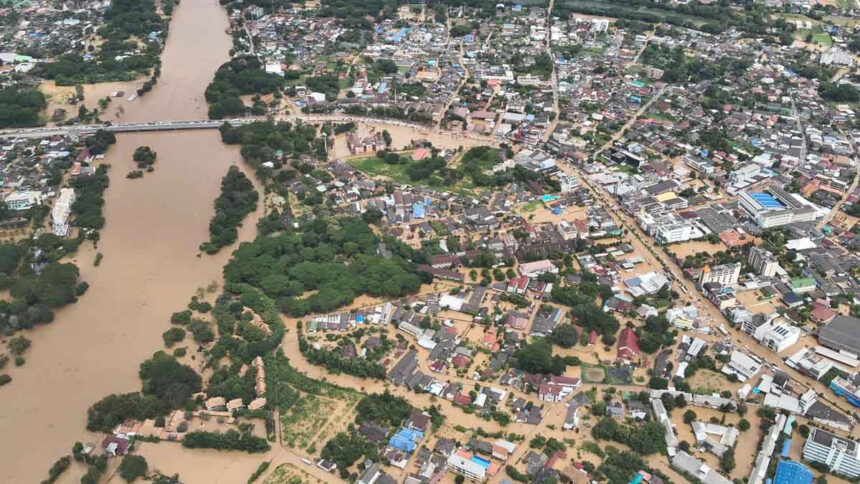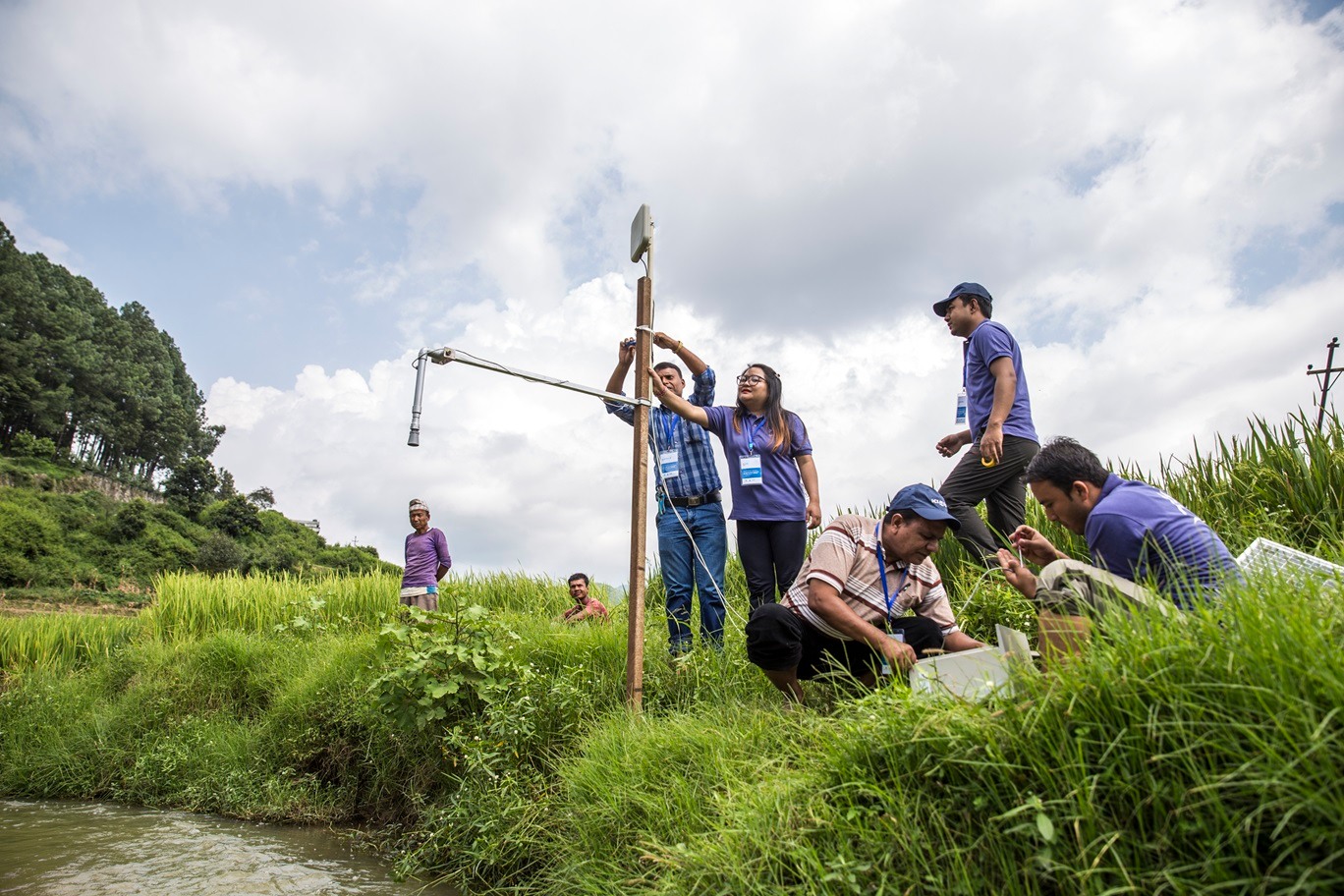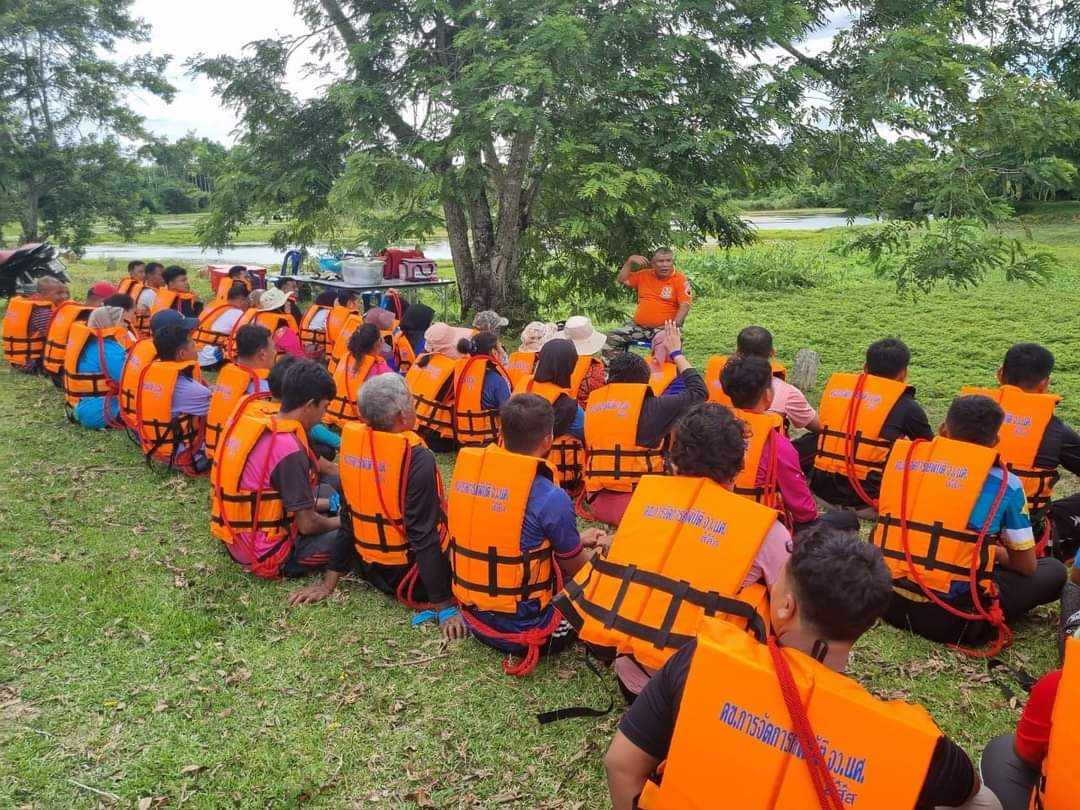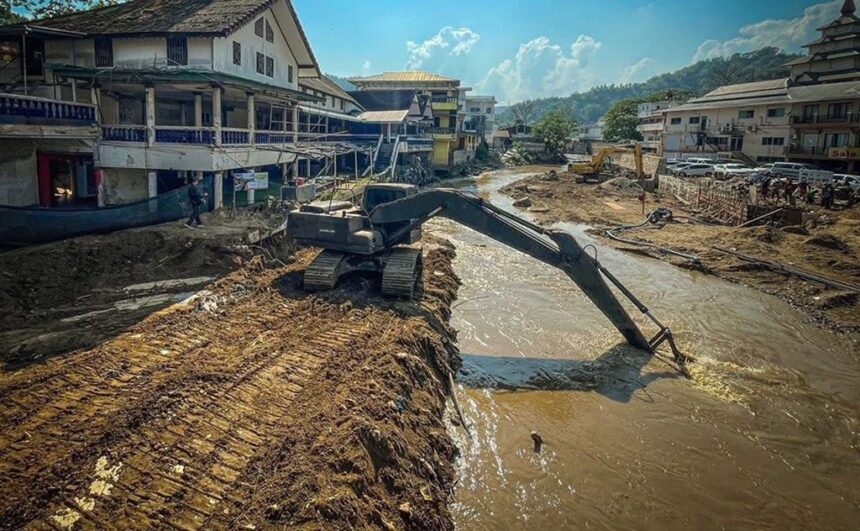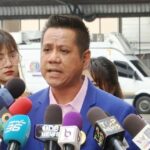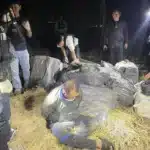Chiang Rai – Residents living along the Kok River are worried as the rainy season starts, afraid they’ll face floods and landslides like last year. Many feel unprepared, saying the government has yet to act on safety plans promised after the disasters of September 2024.
Canals that feed into the Kok River are filled with vegetation and remain undredged throughout the areas flooded in Chiang Rai last year.
Many locals in the Rimkok Sub-district of Chiang Rai say they haven’t had any contact from government agencies about flood preparation or prevention. No training or practice drills have happened.
The villagers, however, have taken some steps themselves. With help from the Community and Highland Development Foundation, they’ve put up water level gauges and started working with six other communities along the Kok River to set up warning systems.
They have also installed solar-powered CCTV cameras to monitor the river.
Villagers say the government officials only talk about water quality and heavy metals, not flood plans. The people living by the river are anxious.
Some homes are still marked by last year’s mud, and now they’re afraid it’ll happen again. This year, we know the water’s contaminated with heavy metals, which makes everyone even more nervous. No one’s swimming in the river now.
Regarding calls to build sediment dams on the Kok River as it enters Thailand, locals have discussed it, but have many questions. They want to know where the dam would go, how big it would be, and if it would really trap arsenic or just let it flow downstream.
If water overflows the dam, will the arsenic-laden sediment stay behind? No one has concrete answers. People are also worried about the impact on villages upstream.
Early Flood Warning Gauges
Residents want the root problem fixed, not just treating the symptoms. Arsenic comes from human activity, so we need to address that. The responsible agencies should talk to those causing the pollution. Residents are stressed, especially farmers who are afraid they won’t be able to sell their crops for fear of contamination.
Juthamas Ratchprasith, a senior officer at the Community and Highland Development Foundation, said their flood network and the Water Resources Office have installed water gauges in several villages in Chiang Rai. They’re focusing on early warnings for seven communities along the Kok, from Rom Thai in Chiang Mai through to Pong Na Kham in Chiang Rai.
When asked, villagers said they’re scared of floods and landslides like last year. They still haven’t been told about any government warning systems. Juthamas recalled, “Last year, Jakue village suffered badly. Homes and belongings were lost—fridges, wardrobes, bedding, cornfields, and rice paddies. Nothing could be sold.”
Associate Professor Dr. Sathian Chantha from Chiang Rai Rajabhat University, who also serves on the Upper Mekong River Basin Committee, said there are disaster response plans drafted by the National Water Resources Office, but they’ve never been put into practice or run through drills. Provincial committees, which include the governor and disaster prevention agencies, need to practise these plans, he stressed.
Disaster Prevention and Awareness
Dr. Sathian said, “The plans have improved, but without drills, agencies won’t know their roles when disaster strikes. So far, people aren’t aware of what to do in a crisis. I’ve raised this many times, but the response is always that there’s no budget and it’s up to local authorities.The Mekong master plan uses a huge budget, but most of it goes to infrastructure, not to community understanding.”
As the rainy season officially starts, Dr. Sathian advised the government to focus on building awareness among locals and supporting collaboration between communities and agencies. Activities like information sessions should be held along all key rivers so people are ready to face emergencies together.
He said, “If we don’t build understanding, these problems will just repeat. The question now is how to limit the damage. Dredging work is happening on the Sai River, which might help for now, but with each rainy season, the job needs doing again.”
With increased mining upstream, the risk of heavy metal contamination is higher. Dr. Sathian confirmed this is a real concern, but most locals don’t know the dangers. Arsenic doesn’t cause immediate illness, but over the years, it can harm health in the region, similar to problems seen in southern Thailand.
If not stopped at the source, these toxins settle in the sediment, and anyone using the contaminated mud for farming can be affected. Heavy metals can also enter the food chain.
Chiang Rai River Projects
Meanwhile, the Chiang Rai Governor led a meeting to address the issue of buildings encroaching on the Thai-Myanmar border and to follow up on progress in dredging the Sai and Ruak Rivers.
The meeting took place at the One-Stop Service Centre in Mae Sai, with the presence of key officials including Maj Gen. Siraphop Supawanich from the Army Engineers, Warayut Khombun, the Mae Sai District Chief, and heads of related agencies.
During the meeting, Maj Gen. Siraphop gave an update on the local development project aimed at disaster prevention in Mae Sai.
The project, run by the Army Engineers, covers two main activities: dredging the Ruak River for a total of 32 kilometres and building a temporary to semi-permanent flood barrier in Mae Sai town, stretching 3,600 metres.
The project began on 18 April 2025. So far, about 15% of the Ruak River dredging is done, and 34% of the flood barrier is complete. The army wants all work finished before June, ahead of the rainy season.
Chansam Pentatham from the Treasury Office said there are 15 state land tenants along the Sai River where the flood wall is being built. Notices have been sent to end their leases, and they have been told to move their belongings out by the set deadline. If they don’t, legal action will follow.
Thanachai Jitnawanich, head of the Forest Protection and Fire Control Office in Chiang Rai, said four cases of illegal forest occupation have been found. Those involved have been told to leave the area. If they refuse, legal steps will be taken.
The Chiang Rai Governor stressed the need for agencies to inform and work with locals staying in the project area to move out, so the work can go ahead as planned. This is to keep people safe from possible floods.
After the meeting, the governor, along with Maj. Gen. Siraphop and Warayut Khombun visited the sites to check on the progress of river dredging and flood barrier construction in Mae Sai.
Related News:
Chiang Rai Officials Push for Dams to Trap Heavy Metals in Rivers




